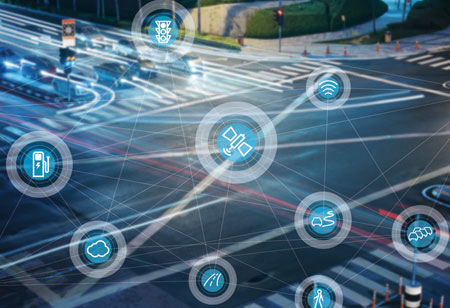THANK YOU FOR SUBSCRIBING
THANK YOU FOR SUBSCRIBING
Be first to read the latest tech news, Industry Leader's Insights, and CIO interviews of medium and large enterprises exclusively from Auto Tech Outlook

By
Auto Tech Outlook | Friday, August 14, 2020
Stay ahead of the industry with exclusive feature stories on the top companies, expert insights and the latest news delivered straight to your inbox. Subscribe today.
The automotive industry should adopt advanced and integrated automotive cybersecurity system to spot, and eliminate the IT security gaps at all levels.
FREMONT, CA: Several security issues are rising in the automotive industry around the connected vehicles day by day. Every base of the plan-build-run lifecycle of the industry be taken into consideration in order to prevent, detect, and respond to possible security threats. The industry is adopting different IT security measures to get rid of such type of issues.
The advanced integrated automotive cybersecurity will spot, and abolish the IT security gaps at all levels in all connected applications: in product security, in the vehicle itself, in the backend, in vehicle production, and in the detection and defense of attacks in the vehicle fleet.
Product security
Digital products are defenseless, and the vehicle data and communication are no exception. Attackers can exploit the vulnerabilities through physical access to the vehicle. The attack vectors are effortlessly accessible with connected vehicles, so the level of risk is high for them. Here the interfaces are not correctly secured; incorrect readings or fake commands can be simulated. Such as wheel sensors, that report locking wheels can impair the vehicle’s braking performance. To avert such kind of attacks, the IT security team must be combined into the design and development of every vehicle platform from the outset. Some specifications, like security implementation, security analysis, testing, and design, are fundamental prerequisites for taking a vehicle platform into large-scale production with a secure IT setup. The organizations should consider all the risk-mitigating factors to ensure security.
IT security in the backend
To accomplish certain robustness against security incidents in the backend communication with the vehicle to be done via elegant trust modeling. Standard security measures can secure a typical enterprise IT-based technology the backend. Even the correctly implemented interfaces can represent potential points of attack via a vulnerable backend. Vulnerability in an interface exposed to the internet may be all it takes for an attacker to take over the backend system and issue commands from there via legitimate channels. End to end encryption can ensure security by allowing only one approved mobile device to access the vehicle.
IT security in vehicle production
It is essential to ensure secure vehicle production throughout the supply chain as some of the IT security deficiencies in the production process can suspend out some of the security measures taken in the design and development of vehicle platforms. The production sector must be isolated from different attacks like viruses and Trojans, by means of multilayered security measures.
Spotting and defense of attacks in the fleet
Nowadays, security information and event management (SIEM) systems work as detection systems bring together logged anomalies and typical attack signatures. Most of the time, when the vehicle comes on the road, then the frailness becomes evident. The SIEM software will alert the cyber team after identifying severe threats, and the team can take further required action for that. The advanced SOC is unlike a traditional cyber defense system. It can detect an attack as soon as one vehicle is targeted, and triggers the rollout of protection measures for the entire fleet.
 Copyright © 2025 AutoTech Outlook. All Rights Reserved | Privacy Policy | Subscribe | Sitemap | About us | Feedback Policy | Editorial Policy
Copyright © 2025 AutoTech Outlook. All Rights Reserved | Privacy Policy | Subscribe | Sitemap | About us | Feedback Policy | Editorial Policy 



